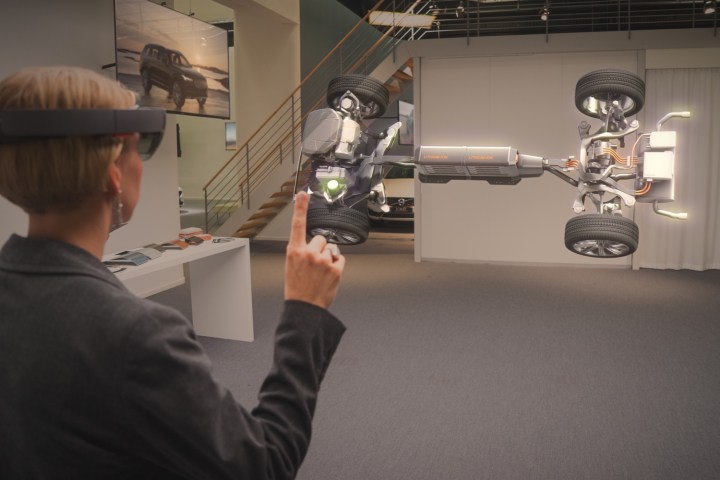
Writer and blogger Rafael Rivera stated on Wednesday morning via Twitter that he has received a shipment confirmation from Microsoft regarding his HoloLens Development Edition unit. Rivera speculates that the device may arrive as early as Wednesday night, depending on the kit’s shipping. So far Microsoft has yet to announce that the developer kits have indeed begun shipping to early testers.
Microsoft’s Alex Kipman announced back on February 29 that Microsoft HoloLens Development Edition would ship on March 30 to those who pre-ordered the device. HoloLens is based on Windows 10, which conveniently already contains APIs needed for holographic computing. The device is also tether-free, allowing users to freely move about without the need for a PC-based ball-and-chain.
As Kipman revealed, HoloLens consists of a special Holographic Processing Unit (HPU) provided by Microsoft, which enables the device to understand gestures and gazes while mapping the surrounding physical environment in real time. The device also sports an Intel-based 32-bit architecture, see-through holographic lenses with an embedded optical projection system, various sensors, cameras for capturing HD video and images combining real scenery with holograms, and Bluetooth 4.1.
Developers that pre-order HoloLens get instant access to apps based on Microsoft’s controversial Universal Windows Platform (UWP) listed on the Windows Store such as Groove Music, Remote Desktop, OneDrive, and more. Developers also have access to holographic app “experiences” and tools such as HoloStudio, an app for creating 3D in 3D at real-world scale. Skype is also compatible with HoloLens, which should provide an interesting communications experience.
In a post published on the Windows Holographic Developer Forum, the administrator revealed that developers are being invited to purchase HoloLens in waves as soon as units are made available. For those that applied, they will receive a notification via email that will provide a status of the application. Once the application receives a green light, developers will receive a “wave number.” Each wave will ship over a period of two to three months, the administrator said.
Finally, if hopeful HoloLens developers received an invitation for the current wave, but may have missed the invitation to order, they can check their status by submitting this form. When it comes time to actually purchase a unit, developers will need to shell out a hefty $3,000. Yikes.
So when will consumers get their hands on Microsoft’s AR headset? That’s the thing: Microsoft has no idea. More specifically, Kipman said during the TED conference in Vancouver that the device won’t be made available to “normal people” until “the world is ready.” While some of us can’t be classified as “normal,” presumably he’s referring to the general public. That said, HoloLens may not arrive until a very, very long time. Bummer.
“If a consumer bought it today, they would have 12 things to do with it,” Kipman told the press. “And they would say ‘Cool, I bought a $3,000 product that I can do 12 things with and now it is collecting dust.’”
Now that developers are reporting that units are beginning to arrive, at least we know we’re on the path to seeing HoloLens in the distant future. Will the consumer-oriented device cost $3,000? If Microsoft waits long enough, perhaps not.


